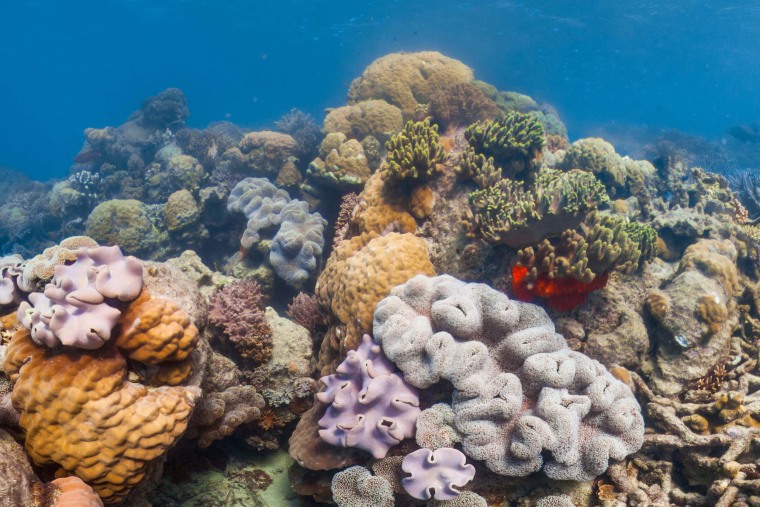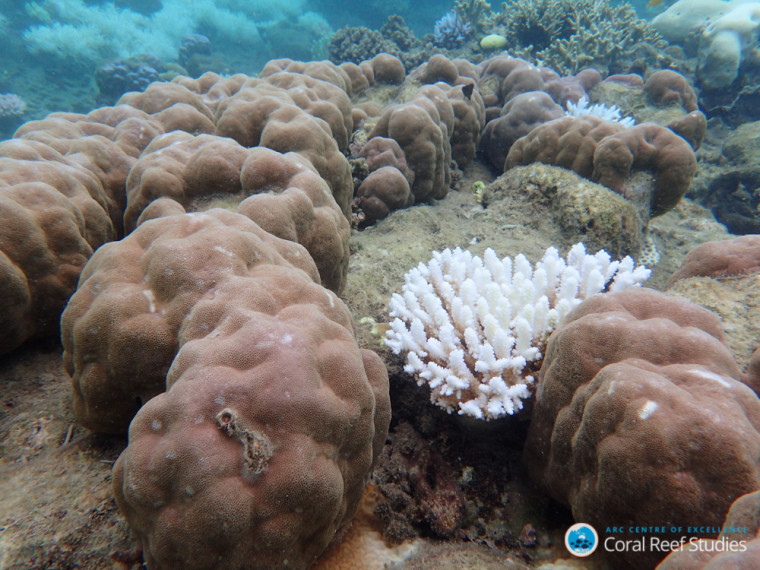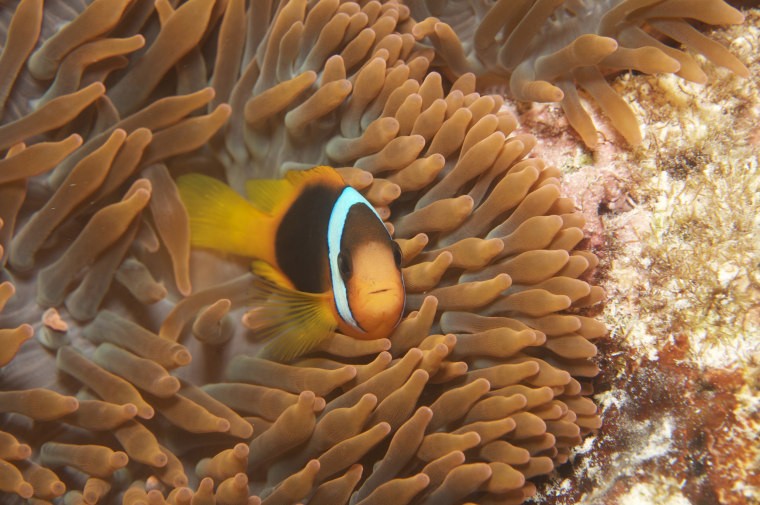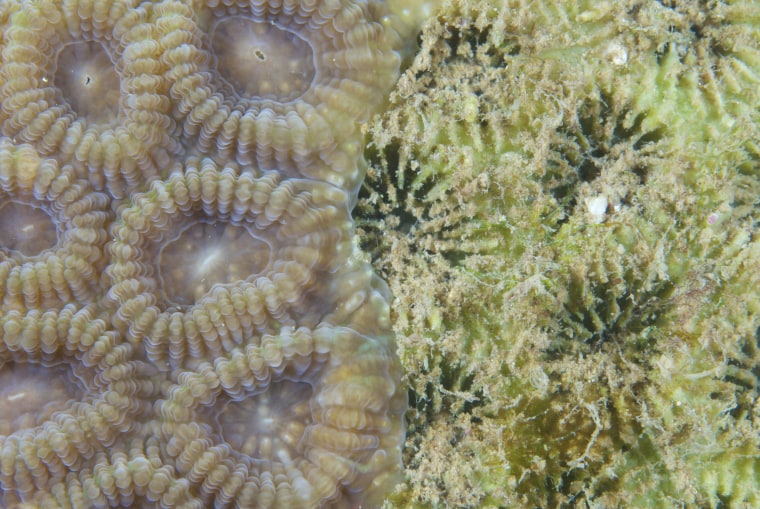Australia's Great Barrier Reef is heralded for its biodiversity: The colorful clusters of coral and wisps of islands stretch 1,400 miles, home to white and orange clown fish, the blacktip shark, humpback whales and hundreds of other species.
But those clear blue-green waters are also changing faster than previously thought, according to a new study in the journal Nature, worrying scientists who say the survival of the Great Barrier Reef and other ecosystems like it is crucial for the planet.

"There's huge trouble in paradise," said Craig Downs, a biologist who studies dying coral in Hawaii.
At the Great Barrier Reef — considered one of the Earth's largest living structures — about half of the coral died in 2016 and 2017 because of record extreme heat, a result of climate change driven by greenhouse gas emissions, the researchers found.
Historically, coral deaths were at a smaller 5 percent to 10 percent.
Other research has estimated that 90 percent of the world's corals could be dead as soon as 2050.
Australia's weather bureau said 2017 was the country's third-hottest year on record, and the scorching temperatures came despite the lack of an El Niño system that normally brings warmer weather.
Scientists are concerned that the colonies of coral that make up the Great Barrier Reef have been damaged to a point where they won't bounce back. If corals remain in too-warm water they turn white — a process known as bleaching — and can potentially die.

"It's quite challenging to witness the severity of this bleaching — it's the worst we've ever seen," Terry Hughes, director of a government-funded center for coral reef studies at James Cook University in Australia and the lead author of the study, told Nature.
He said that while some types of coral died, others survived — indicating the make up of the reef is undergoing a remarkable transformation.
"Losing a lot of corals has a broader ecological impact: species that eat the corals lose their food source; fish that would hide in the corals become more susceptible to predation from sharks," Hughes added.
In another report published this month in the journal Proceedings of the Royal Society B: Biological Sciences, scientists said they went to French Polynesia in the Pacific Ocean to study clown fish.
The creatures have a symbiotic relationship with sea anemones, which provide them safe harbor. But when the anemones undergo bleaching, the clown fish's body also changes and it expends more energy. That isn't beneficial for the small creatures, which are essentially just working extra hard to survive.

There's more at stake for humans as well when reefs — whether they're in Australia, Hawaii, the Caribbean or another tropical destination — are on the brink of being wiped out.
Loss of coral reef ecosystems should be a major concern to people, even if they live a long way from them, said Nick Graham, a marine ecologist at Lancaster University in England.
"Coral reefs house over a quarter of all marine biodiversity, so anyone who cares about biodiversity and extinction needs to worry about the future of coral reefs," he said. "They also provide food and livelihoods to hundreds of millions of people, so anyone who cares about food security and migration needs to care about the future of coral reefs."
Downs said he's already seen serious depletion of corals in Hawaii, as well.
"Maui is a great example: The entire west coast used to be coral reefs 40 years ago, but now they're only at the north and south poles of the island," he said.
In addition to climate change, he blames pollution, including from sunscreen that humans use, agricultural runoff and sewage from resorts for making the waters more toxic.
The coves and bays around the coral reefs are beautiful and draw tourists — but that increase in human activity is also what's hurting the environment, Downs said.
"Climate change guarantees its extinction in 150 years," he said in general of the reefs.

Downs, an Oahu native and the executive director of the environmental lab Haereticus in Virginia, said he supports legislation in Hawaii that would ban sunscreen that contains the chemicals oxybenzone and octinoxate as well as enforce greater pesticide control.
The chemicals are so bad, he said, that he's heard stories of them tainting waters in the Caribbean as well. Fish are sullied by an unnatural coconut flavor — or whatever the fragrance is in the sunscreen — and humans taste it when they're consumed, he said.
The American Academy of Dermatology has argued that there is no data showing oxybenzone is a health hazard and supports it as an ingredient that protects skin from the sun.
But there's no disputing the reefs are dying, Downs said, and that will be devastating to tourism — the main economic driver in Hawaii and other popular vacation spots.
When tourism suffers, he added, that means the loss of jobs, and the need for people to migrate elsewhere for work — putting pressure on other areas and local resources.
Ultimately, he said, it's not that humans shouldn't go to visit coral reefs or enjoy them — but it's about being mindful of not using harmful sunscreen, not leaving plastic in the ocean and not polluting the environment in other ways.
"Go enjoy, but think how you can reduce your footprint," Downs said. "Leave no trace."
